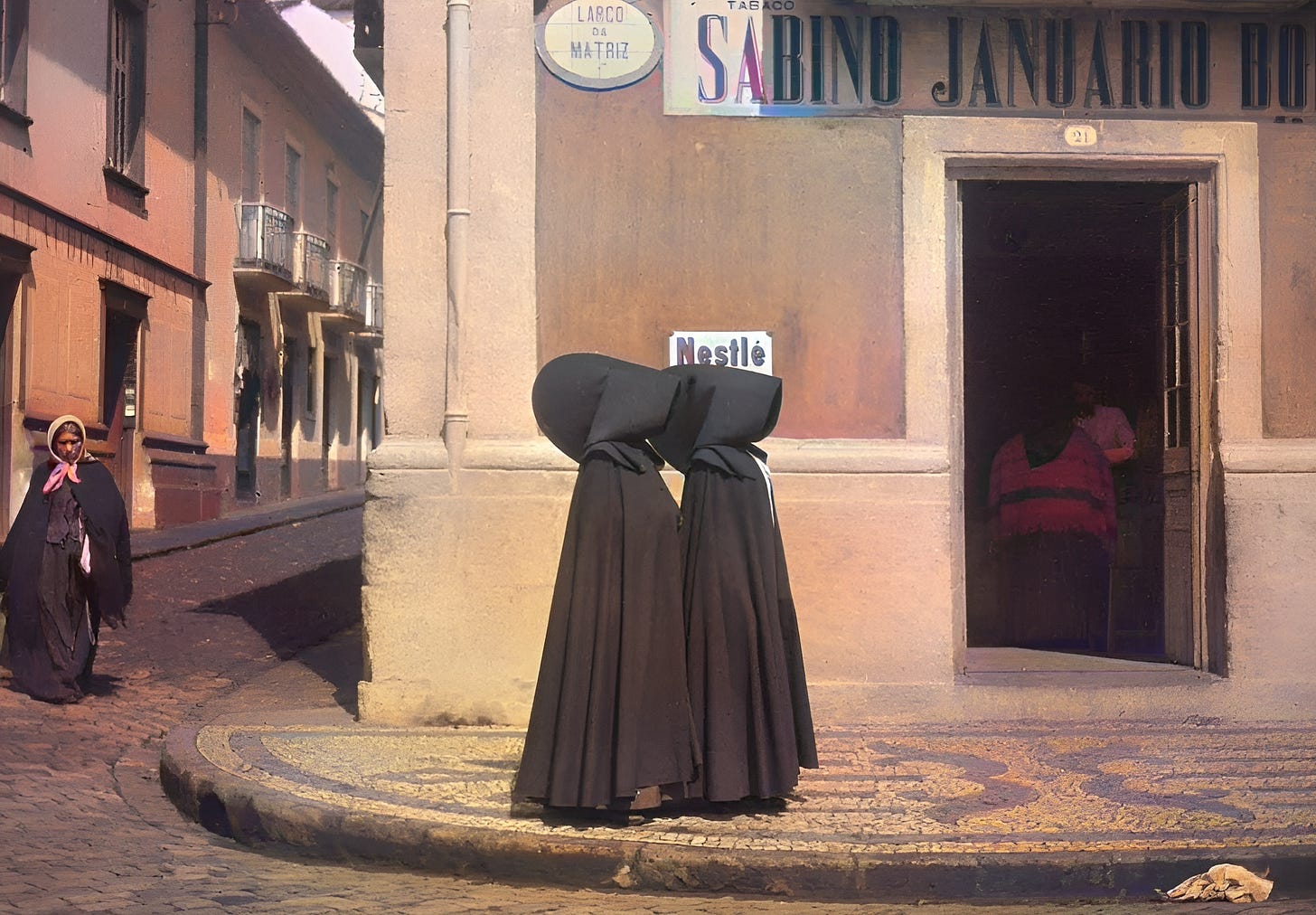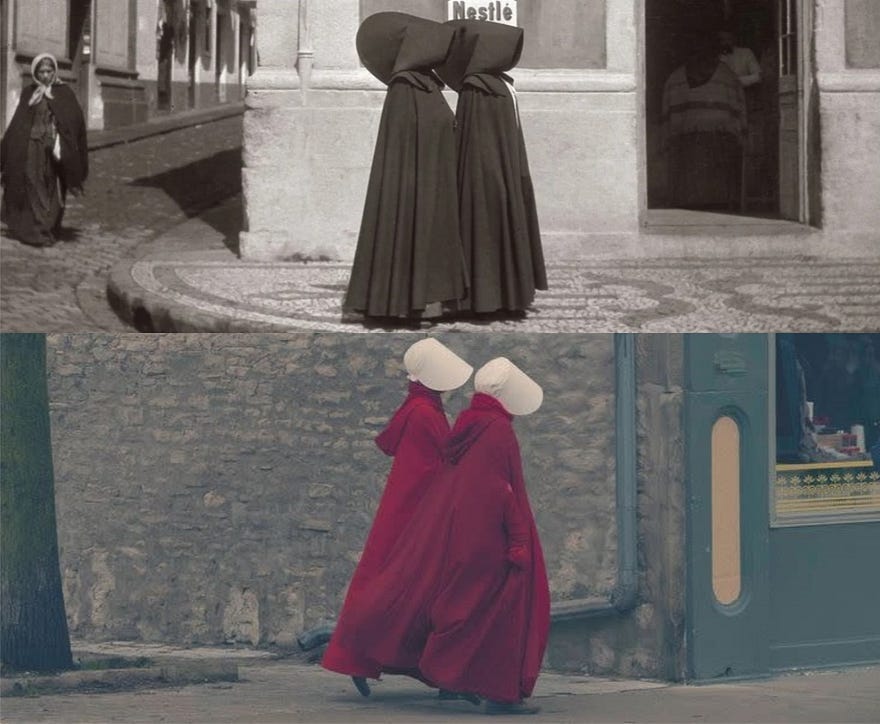Capote e Capelo: The Real-Life Handmaid's Cloak
Discover The Handmaids Tale analogy and the striking truth behind traditional women's fashion in the Azores

There was a time when Azorean women doing their daily errands moved like shadows buried deep under thick woolen cloaks and hoods in the mist-shrouded villages of the mid-Atlantic archipelago.
The people from Blue Island called the two-piece costume capote and capelo. This is their story.
Last year, in October, I got my first real-life impression of how women wore this peculiar costume when I spent a week on Faial, one of the nine islands that comprise the Azores.
Until then, those hooded figures were only vague characters roaming the pages of a book I had loved since childhood: an impressionistic travelogue about the Azores penned by Portuguese novelist Raul Brandão and a great example of the travel literature genre.
Thinking about those hooded women wrapped in dark cloaks, my thoughts flowed from the evocative pages of Brandão’s The Unknown Islands² to the ominous fictional dystopia portrayed by Margaret Atwood’s and the “modesty costume” worn by the Gilead characters in The Handmaid’s Tale.³
The analogy is striking, considering the dystopian novel draws on Atwood’s diverse cultural references and gets inspiration from Victorian-era accessories, which in Western culture have resounding connotations with the same modesty and reserve values typified, for instance, by the Arabic chādor Atwood wore on a trip to Afghanistan.⁴
Afterward, for the TV series adaptation, designer Ana Cabtree tried to give the clothing worn by handmaids the subliminal role of nullifying the individuality and objectifying women.⁵ A purpose we also find in the chador and the traditional Portuguese women attires, to which the Muslim influence⁶ is no stranger since the Iberian Peninsula was ruled for eight centuries by the Almoravids, in what was known as al-Andalus and or al-Gharb (the west).*
So, it was this stream of thought between fact and fiction urging me to share the story of the capote and capelo and uncover its most remote cultural references buried deep within our common heritage.
The Blue Island “Handmaids”
I admire the Azorean people and their fascinating cultural idiosyncrasies. For me, a mainland resident, exploring those remote volcanic islands felt like stepping into a dream, or even, at moments, a real-life version of Margaret Atwood's The Handmaid's Tale. Here’s why.
Keep reading with a 7-day free trial
Subscribe to Portugal Calling to keep reading this post and get 7 days of free access to the full post archives.




